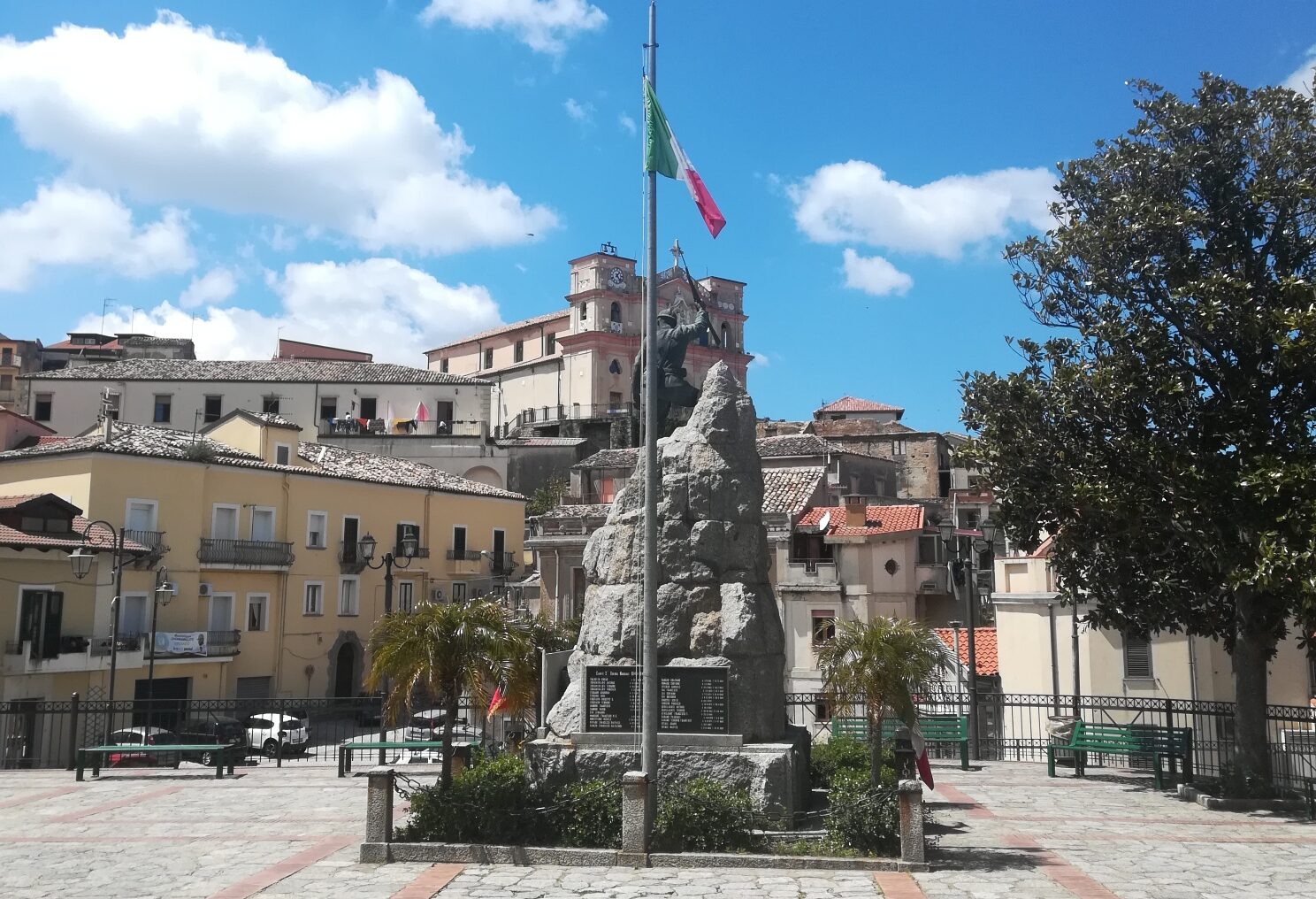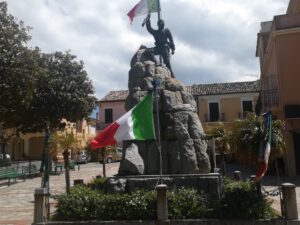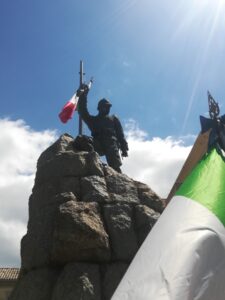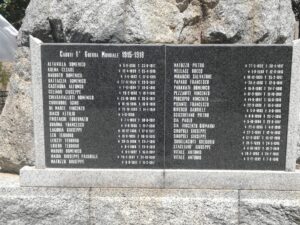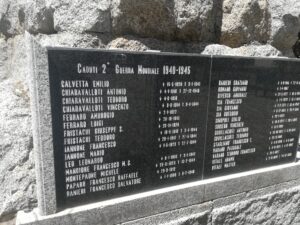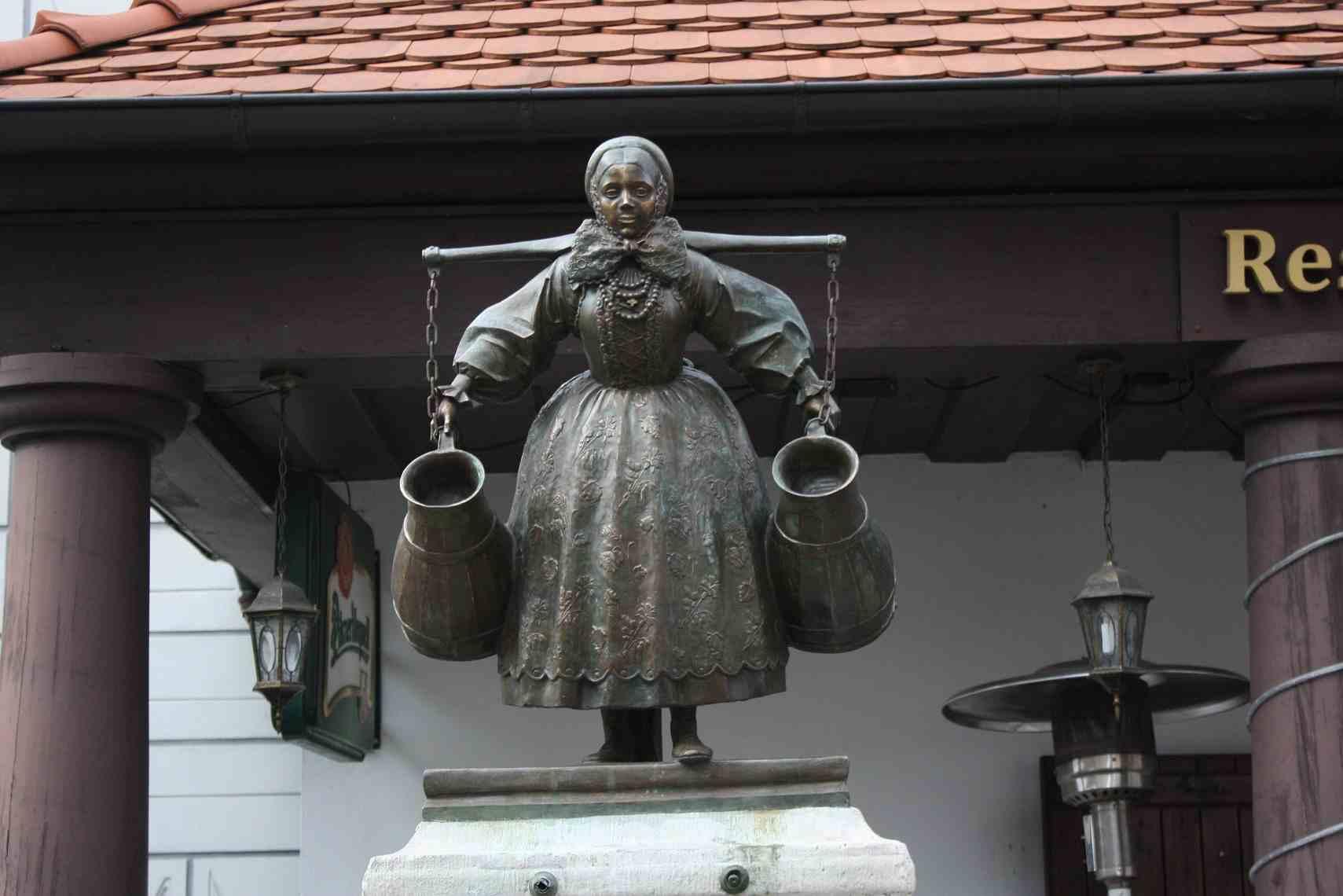By Francesco Tirinato - JUMP TEAM (Italy)

We are in the central square of Satriano (a town in the province of Catanzaro), Piazza Spirito Santo, better known as ‘Bicocca’*, the main meeting place of the Satrianese community.
In the centre stands the solemn Monument to the Fallen, originally built in 1930-1940 to commemorate the young soldiers from Satriano who were killed during the First World War (47 victims), and to which plaques were later added with the names of those who died in the Second World War (31 victims):
«The monument consists of a high pyramid made of granite blocks, on top of which stands a bronze statue of a soldier victoriously raising his bayonet rifle to the sky. The names of the fallen are inscribed on two black granite slabs».
It is not only a symbol, but a real pillar belonging to the wider cultural and historical heritage of the town, through which the memory of our ancestors, sacrificed on the altar of horrors: The War, still remains strong and alive.
And precisely in reference to the events of the war, among the episodes most cited by the local elderly (our living libraries), those concentrated in a hot and unforgettable summer day: 16 July 1943, deserve special mention.
On the feast day of Madonna del Carmine, the town suffered a heavy bombardment that miraculously caused no casualties. More precisely, four bombs were dropped (presumably by British military planes), one of which exploded in the vicinity of Piazza Spirito Santo and another directly hit the Mother Church:
«A bomb fell right on the church, destroying the right aisle and leaving the statue of St Theodore, our Protector, under the rubble. The explosion occurred around noon, just after the end of the sung Mass, celebrated in honour of Madonna del Carmine and attended by the entire community. If the bombing had happened half an hour earlier, there would have been a real massacre».
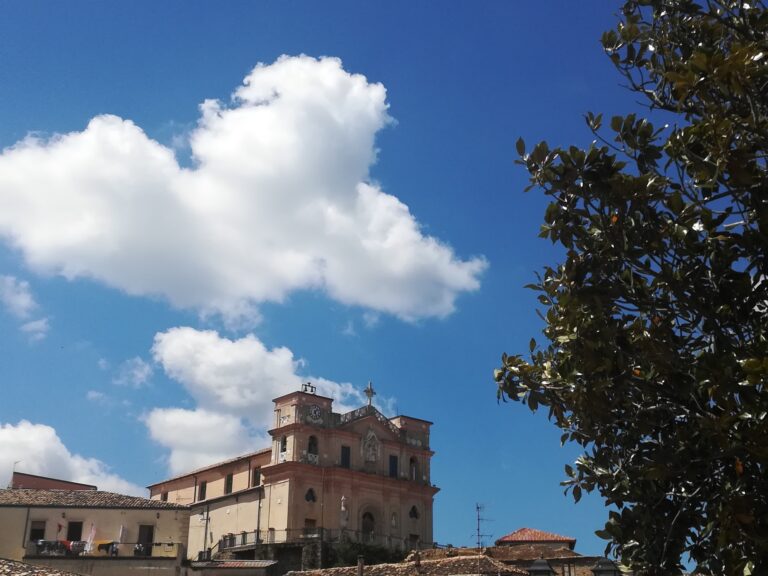
In virtue of that episode, even today, with the same enthusiasm, crowds of people gather in the Mother church to celebrate the Madonna del Carmine, who, according to the believers, saved a large part of Satriano’s population from a doomed destiny.
As I write this, the 76th anniversary of the Liberation from Nazi-Fascism and all that it represented is drawing to a close. It is therefore our duty to preserve and renew the memory of these events as well as all the countless dramatic implications of the distressing and dark period of the war.
The moment of great difficulty we are going through because of the pandemic makes us reflect on the relevance of the values that the Resistance handed down to us.
It is therefore necessary to check whether the fundamental principles of our Constitutional Charters (for which too many have sacrificed their lives) need to be protected, strengthened and, above all, defended from the repeated and frequent attacks that come with the aim of undermining civil coexistence, steeped in revisionist accounts of history linked to nostalgia for old dictatorships.
I would like to take this opportunity to point out that the language of hatred, which always leads to racism, does not unite cultures but rejects them. Multiculturalism has long been a hallmark of our societies and must be managed and transformed into social inclusion.
After all, the history of the EU is rooted in a common heritage of intentions and ideals promoted despite cultural differences.
«Whether resistance fighters or lawyers and parliamentarians, the pioneers of the EU were a group of people moved by the same ideals: peace, unity and prosperity in Europe».
*Bicocca : literally means small fortress or blockhouse; in this case it is a possible reference to the ancient and imposing Satriano Castle, which was razed to the ground in the 1783 earthquake. Today there is still a bicocca street (near the main square) and a castle slope in memory of the old fortification.
Sources:
Giulio De Loiro: Gente Nostra. Uomini e donne dalle mani operose, veri protagonisti della storia di Satriano.
https://europa.eu/european-union/about-eu/history/eu-pioneers_it
Photos by Francesco Tirinato

